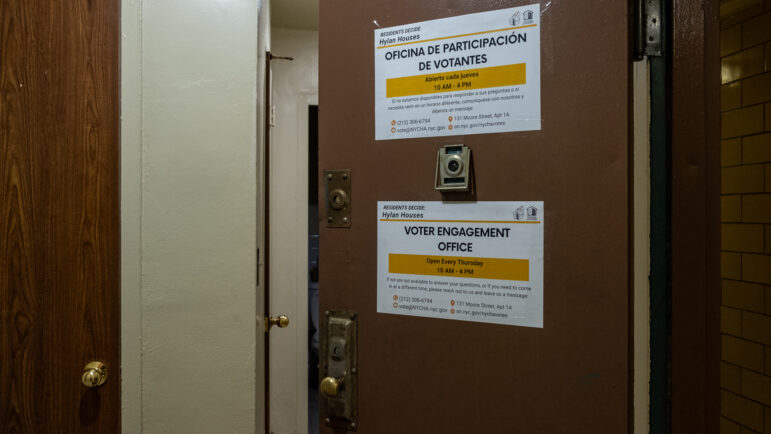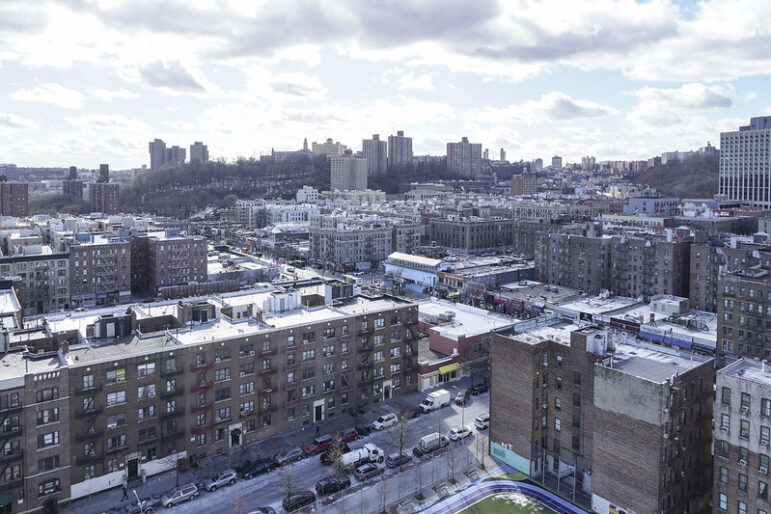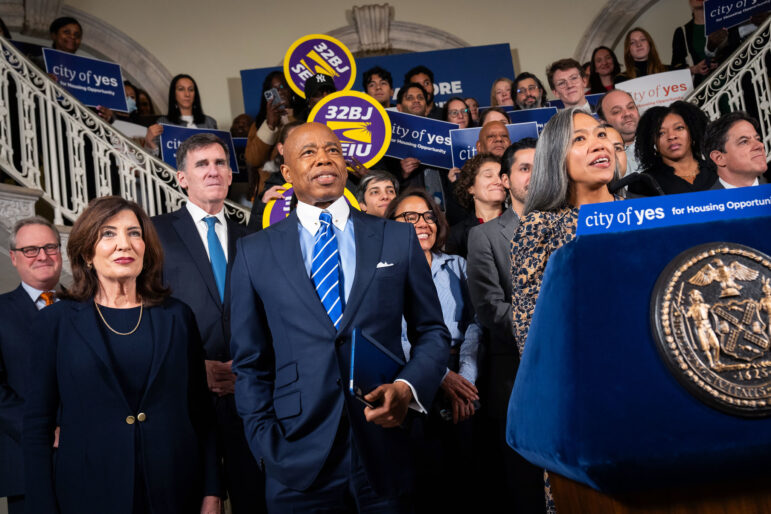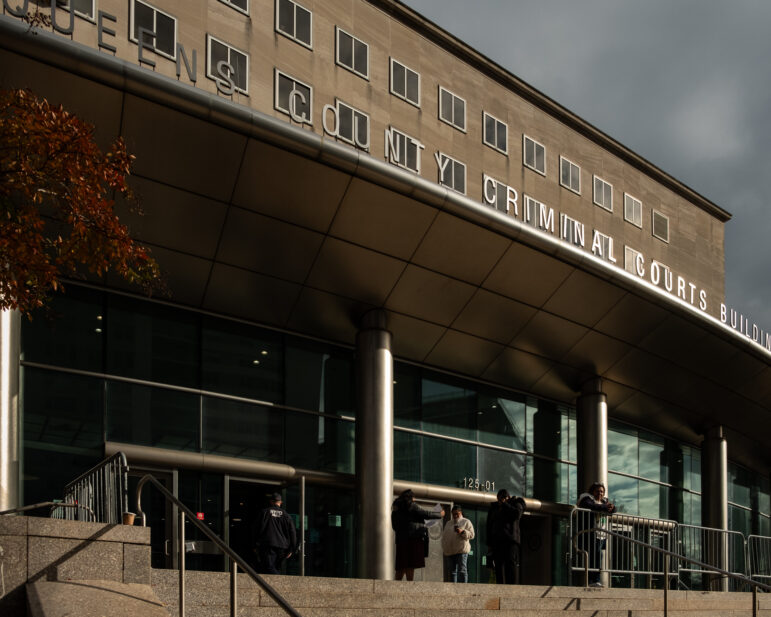“Without access to these decisions, lawmakers and the public are left with only anecdotal claims and selective narratives, often driven by the loudest opponents of discovery reform. The judicial record, which documents exactly how these cases unfold, is largely hidden from view.”
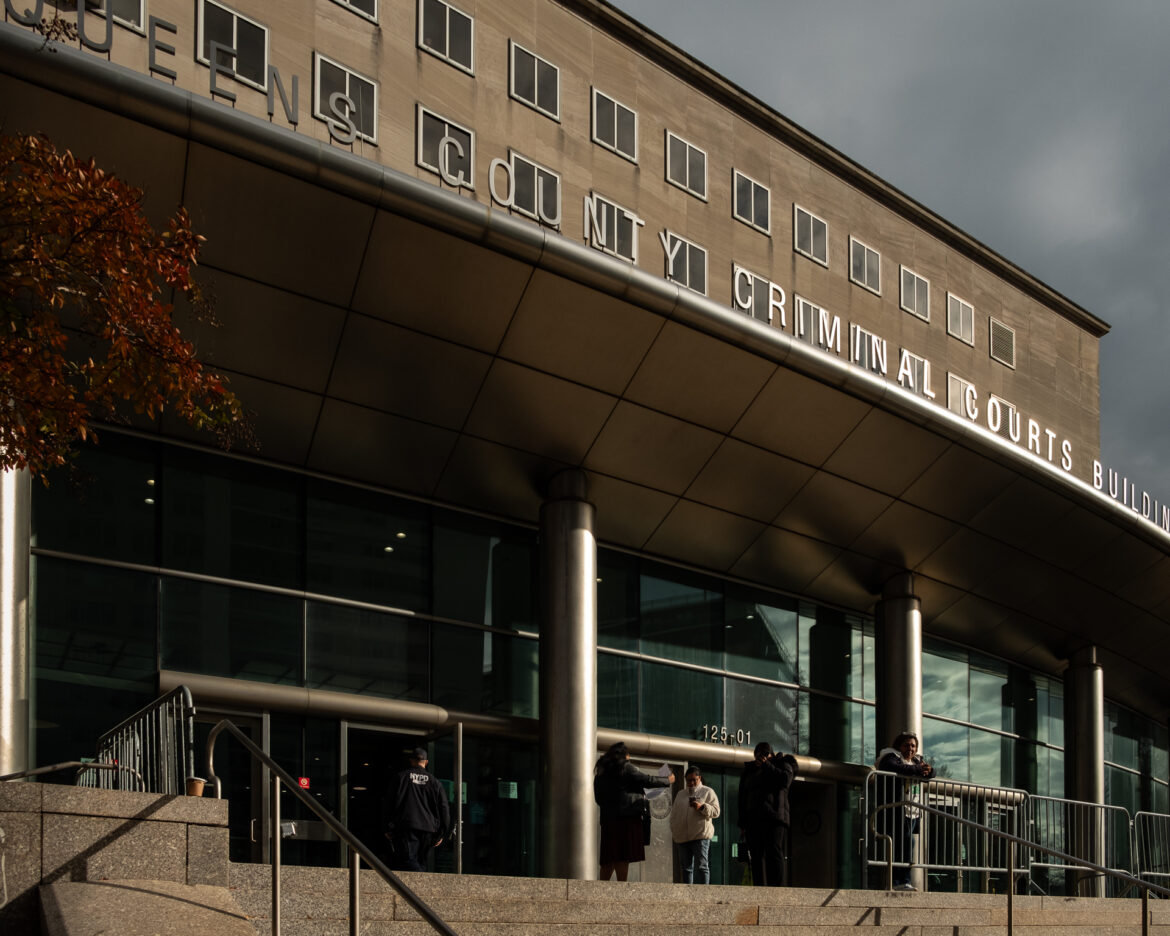
Adi Talwar
A view of the Queens County Criminal Courthouse located on Queens Boulevard on the morning of November 20, 2024.New York’s 2020 discovery reform law stands as a landmark achievement in criminal justice reform. By requiring prosecutors to share evidence earlier in cases, it helps prevent wrongful convictions and creates a fairer legal system.
Yet the law faces mounting criticism, with some officials calling for its rollback. These critics paint a picture of a broken system where cases are dismissed on technicalities–or, more cynically, by defense attorneys who “game” the discovery law to obtain case dismissals.
These claims collapse under scrutiny. When judges dismiss cases under the discovery law, they don’t cite clever defense tactics or minor procedural missteps—they document clear, repeated failures by prosecutors to meet basic obligations. Some prosecutors wait months to provide basic evidence like body camera footage. Others certify they’ve shared all materials while knowingly withholding key documents. Still others make dubious arguments claiming police disciplinary records are exempt from disclosure.
To be clear, judges are not imposing impossible standards on prosecutors. New York’s highest court has ruled that the law “does not require or anticipate a perfect prosecutor”—mere due diligence will suffice. Yet prosecutors often fail to meet even this modest bar.
The real question is: Why don’t New Yorkers know the truth about these dismissals? The answer lies in the opacity of our court system. When judges dismiss cases because of issues related to the discovery law, they write detailed decisions explaining exactly what went wrong. These decisions provide crucial insight into how the law actually functions on the ground—and exactly what led to a dismissal. However, an astounding 94–99.5 percent of such written decisions remain unavailable to the public online: judges simply choose not to make them public.
This lack of transparency doesn’t just shield the judiciary from scrutiny—it also warps the public debate. Without access to these decisions, lawmakers and the public are left with only anecdotal claims and selective narratives, often driven by the loudest opponents of reform. The judicial record, which documents exactly how these cases unfold, is largely hidden from view.
I have reviewed almost 300 unpublished decisions from New York City, issued since mid-2022 that specifically found a discovery violation under the new law. These are the very cases opponents of discovery reform seize on to argue that the law is unworkable.
Yet they tell a consistent story: Cases are not being dismissed because of minor technicalities or defense attorneys exploiting loopholes. Instead, judicial decisions reveal that dismissals stem from prosecution failures to comply with basic evidentiary obligations. In some cases, prosecutors do not make a genuine effort to obtain required materials. In others, they wait until the last minute to turn over evidence.
Here is a sample of the judges’ own words:
“The [prosecution's] failure to disclose numerous items, despite being expeditiously alerted by defense counsel, the lack of explanation regarding the omissions, and the delay in ascertaining the existence of materials does not demonstrate 'the diligence reasonably expected from, and ordinarily exercised by, a person who seeks to satisfy a legal requirement or to discharge an obligation.'”
“This court is loath ever to ascribe bad faith to any attorney. But the People's discovery practice in this case has been problematic from the start. As Judge [name redacted] noted, the People filed their COC promptly, but invalidly—effectively using it as a placeholder while they continued to gather and withhold discovery. This was not what the legislature, nor the Court of Appeals intended [...] There is no evidence here of any good faith effort to comply with Judge [name redacted]’s order, or of a meritorious, non-frivolous, proper motion for a protective order.”
“This issue can be simply resolved with a phone call to the complainant, yet the People have made no efforts to ascertain the information. Throughout the entirety of their response, the People have repeatedly thrown their hands up and refused to make any efforts to discover any information about this case.”
“In this instance the People did not show due diligence in obtaining and disclosing mandatory discovery. The People knew about the [evidence], did not disclose [it], and then 'certified' that they had disclosed all known material.”
These quotes are not outliers; a list of the quotes I have compiled from these decisions is available here. The decisions I’ve reviewed—while not a comprehensive sample—consistently document prosecutorial failures, often in multiple instances per case. I do not know what other decisions say, because judges do not make them available. It is entirely possible that other rulings tell a different story—but those rulings remain inaccessible. At minimum, the cases I have reviewed directly contradict the claims made by opponents of discovery reform.
The consequences of this opacity extend far beyond discovery reform. As a 2023 report from Scrutinize and Reinvent Albany highlights, public access to written decisions is crucial for monitoring implementation of new laws. These court decisions show how judges interpret and apply new laws, providing legislators and the public with a direct window into whether the laws are working as intended. Right now, the hidden judicial record allows critics to misrepresent the law itself rather than acknowledge failures in its implementation.
Two straightforward solutions would address both the information gap and the underlying problems in implementing discovery reform. First, the New York Legislature should pass pending legislation S613/A825 to help prosecutors obtain discovery materials more efficiently from police departments. This law will address some of the logistical challenges prosecutors face in obtaining evidence from law enforcement agencies. However, it does not—and cannot—excuse the failures to comply with discovery obligations that judges have repeatedly identified.
Second, the Legislature should pass Senate Deputy Majority Leader Michael Gianaris’ judicial transparency bill, S3864, requiring publication of criminal court decisions. Without such a law, future debates over news laws will continue to be driven by the loudest voices rather than hard evidence.
Discovery reform has made New York’s criminal justice system fairer. The problems it faces stem not from flaws in the law itself but from its implementation by some prosecutors. Bringing transparency to judicial decision-making will ensure that public debate is based on facts, not misinformation.
Oded Oren is the founder and executive director of Scrutinize.



